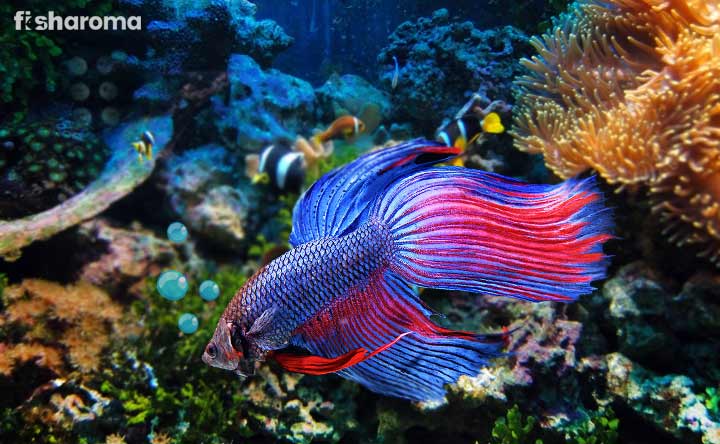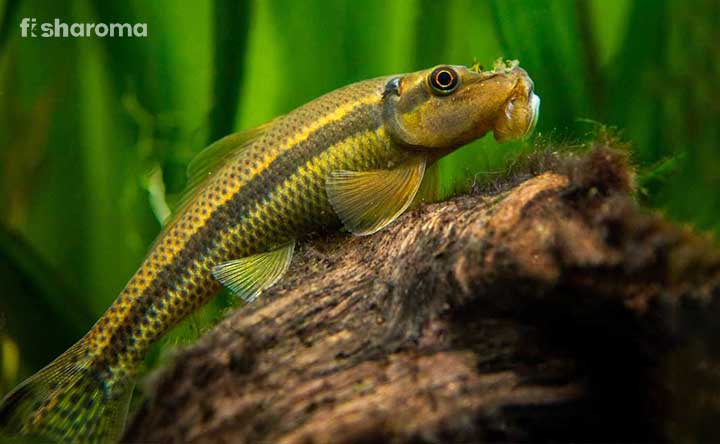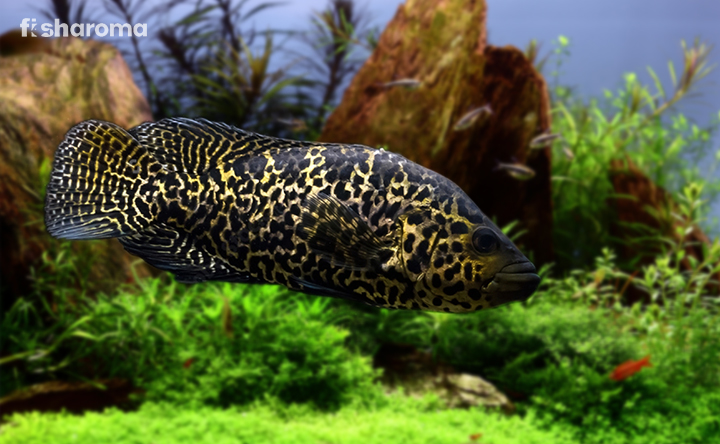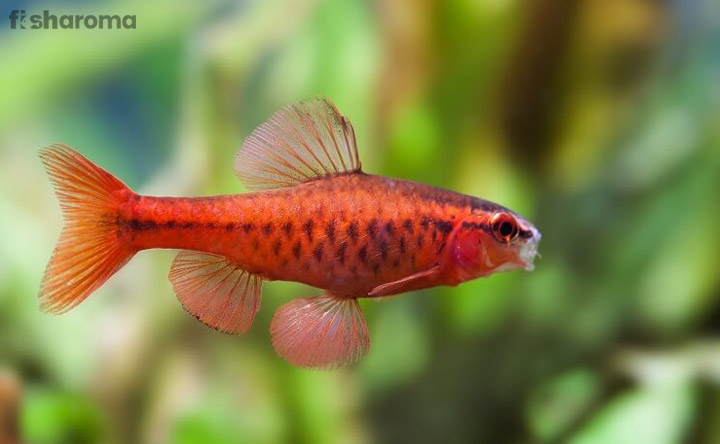Bumblebee Catfish: Care Guide, Diet, Breeding, Tank Requirements and More
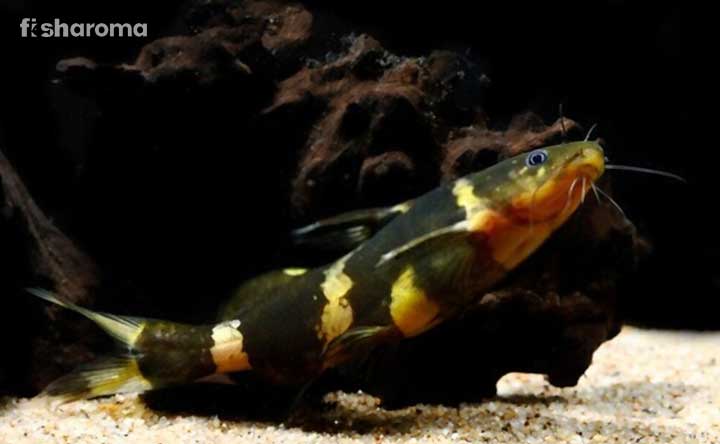
- Origin and Habitat of Bumblebee Catfish
- Appearance of Bumblebee Catfish
- Behaviour of Bumblebee Catfish
- Lifespan of Bumblebee Catfish
- Diet of Bumblebee Catfish
- Tank Requirements for Bumblebee Catfish
- Water Parameters for Bumblebee Catfish
- Compatibility of Bumblebee Catfish
- Breeding Of Bumblebee Catfish
- Disease and Treatment of Bumblebee Catfish
- Summary
True to their name, Bumblebee Catfish always adorns your fish tank in the stunning way possible. These amazingly-coloured creatures can smell food very well and slowly peep out of their hides to have it. These are fun creatures and not particularly aggressive in nature, however, can often become predatory.
Being a bottom-feeder adds an incredibly significant feature to their habit, as they effectively scavenge with a widely-opened mouth in the lower portions of your tank.
Keeping these fishes needs a complete suggestion on their food, habitat, breeding, tank and water requirements. Having said this, we bring before you a comprehensive care guide for the same.
Key Specifications of Bumblebee Catfish
Prior to going deep into every aspect of the Bumblebee Catfish care guide distinctly, let us look into a few important specifications of their species.
| Scientific Name | Microglanis iheringi |
| Origin | South America, Columbia and Venezuela |
| Lifespan | 5 Years |
| Colours | Dull yellow and black bands |
| Temperament | Peaceful |
| Size | Maximum 3 inches |
| Diet | Omnivorous |
| Family | Pseudopimelodidae |
| Compatibility | Easy going with similar-size fish |
| Tank Size | 20-gallon tank |
| Care Level | Easy |
Overview
Belonging to the Pseudopimelodidae family, this freshwater species is a beautiful pet for your aquarium. However, their predatory nature resists them from dwelling in the tank with small peaceful feeder fishes.
These vibrant-coloured fishes are extremely magnificent to watch as they come out playfully from their hides to scavenge the food. They dig their mouth in the substrate and gradually scrape the food from the bottom.
There are two types of Bumblebee Catfish, which include an Asian descendant and the other is South American. However, with easy caregiving, they can happily sustain in home aquariums, wherein increasingly revealing the beauty of their sparking yellow bands.
Origin and Habitat of Bumblebee Catfish
Native to South America, they are also found in great numbers within the rivers of Columbia and Venezuela. Presently, these fishes are also drifting over to different countries like Guyana, northern Brazil and Ecuador.
In their natural habitat, they prefer to swim in the strong current of rivers and streams. They tend to revolve in areas where there are rocks, substrates and shades so that they can keep hiding. Bumblebee Catfish also prefers wilds and hence can be found inhabiting basins of Amazon.
Appearance of Bumblebee Catfish
Bumblebee Catfish has an elongated body with erected dorsal fins and well-developed spines along with moderately-forked caudal fins. With a flat head and maxillary barbells, their face looks almost like cats, which explains the reason behind its name. These attractive fishes have lateral lines in their body. Their adipose fins are located above the anal fins and near to caudal fins.
Barbells of Bumblebee Catfish are so long that they reach the origin of pectoral fin spines. These barbells are a pivotal part of their body as the fish use them to feel their taste, smell and environment.
Having more vulnerability to scratches, the outer layer of their whole body is full of skin and not scales.
Their wide mouth helps them to have a large amount of food or even small fish.
Size
Once grown completely adult, a matured fish measures three to four inches and generally don’t take up much space within the tank. However, their size might vary a bit if the water parameters are different, though it is completely regardless for them to grow larger than the estimated size despite high care.
Colour
Bumblebee Catfish has dull yellow and black bands in their body. Their dorsal fins look dark brown and have a pale tip along with dark-brown, crossly-banded caudal fins. Their caudal peduncle area also comes in dark brown colour.
The whole yellow and dark brown combination makes a striking appearance.
Behaviour of Bumblebee Catfish
These fishes are nocturnal; hence, most of their activities can be seen at night when there is very dim or no light. These bottom dwellers mainly avoid swimming in open water; they only do so while searching for food. Usually, they tuck themselves in crevices and observe if food is being served.
These peaceful species are very shy; the most important reason for hiding out and avoiding other varieties of species.
The predatory nature does not allow aquarists to keep other small feeder-fishes as they become prey to Bumblebee Catfish. By providing them with rocks and caves, you can surely reduce their stress level, which in return provide them with a prolonged lifespan.
Lifespan of Bumblebee Catfish
Bumblebee Catfish lives for four to five years roughly, where it is uncommon for them to exceed the mark of five years. Being extremely hardy fish, the Bumblebee Catfish can tolerate any situation you provide them with. However, any inappropriate practice they had in earlier days, will surely impact their lifespan.
For a healthy lifestyle and an elongated lifespan, we recommend you keep all water parameters satisfying.
Diet of Bumblebee Catfish
By nature, these fishes are omnivorous where their predatory nature helps them to prey on feeder fishes, especially at night. They mainly thrive on meaty protein along with plant foods, for which, meeting their feeding requirements is very easy.
From a plethora of foods, you are free to choose any for your fish. You can give them high-quality dry foods, but the presence of nutrients is less in these owing to the manufacturing processes. Thus, these foods can be used as supplements and not a whole meal.
Bumblebee Catfish prefers sinking pellets and algae wafers when kept in a community aquarium. Other types of foods include:
- Daphnia
- Bloodworms
- Earthworms
- Live foods
- Frozen food
- Green vegetables
- Zucchini
- Lettuce
When hungry, your pet can find food from substrates and eat whatever they find, which include small pieces of spinach and different vegetables. However, being nocturnal, they also eat at night; it’s better to put the food in the tank in the evening.
You must feed your Bumblebee Catfish at least thrice a day and in small amounts so that they can finish within a couple of minutes. This will help to keep the tank free of any uneaten food that is likely to get decomposed at the bottom.
Tank Requirements for Bumblebee Catfish
It is time to dig the different aspects of tank requirements so that you can easily keep your Bumblebee Catfish in the desired environment.
Tank Size
These aquatic pets are medium-sized and can easily fit themselves in a 20-gallon tank. However, if you keep them in the community, you need at least a 50-gallon tank to provide them space to move.
Tank Lid
Keeping a tight tank lid will keep your tank safe from any other of your pets. Moreover, a sturdy lid will provide proper resistance to dirt and dust from getting accumulated in the water.
Substrate
Mainly, the Bumblebee Catfish thrives in the soft sandy substrate where they can bury their head to get bites of food that are laying in the bottom. These fishes have fewer scales and more skin all over their body, for which you must put a soft layer of the substrate so that there is no scratch on their skin or barbels. Any rocky pebble is not recommended as it hurts their skin.
Create enough fun-activity arrangements for your pet, like soft sands, so that they can hide there.
Filter
These fishes prefer strong current, for which you need to keep the filter a bit high so that it can produce a strong movement.
Ornaments
Their shy nature aids in innovating the fish tank with differently-shaped caves, crevices and rocks. They will get enough space to hide during the day; however, remember to keep the holes of caves larger so that your fish don’t get stuck there.
You must completely prohibit yourself from using any toxic colouration or hard pebbles.
Presence of Flora
The Bumblebee Catfish prefers wilds while dwelling in their natural habitat, which demands moderately-thick vegetation in their tanks also. Bumblebee Catfish will climb on the plant leaves as they enjoy taking rest under canopies.
Different kinds of floating live plants go well with your Bumblebee Catfish. You can also keep tall, broad-leaved plants or any artificial, ground-covering plants in their tanks, however without toxic colouration.
The recommended plants for your Bumblebee Catfish are Java Ferns and Amazon Swords.
Lighting
The lightning must support the plants you have planted in the tank, for which you must use any dim fluorescent light or LED bulbs.
Cleaning Method
Cleaning the fish tank on a frequent basis ensures better health for your fish. You must clean your tank at least once a month.
In order to clean your pet’s residence, always use a soft cloth dipped in warm water as you tenderly wipe away dirt or dust. Recommended that you use an algae-scraper to scrape the algae on plants and walls; also using gravel vacuum helps to scrape away algae from substrates also.
After the initial cleaning is done, take your tank under the tap and clean any residual soap or bleach by applying running water. While conducting this method, you must keep your fish in a bowl with the same water in it, or else a change in water parameters will harm your fish.
Water Parameters for Bumblebee Catfish
After discussing all the necessary points on Bumblebee Catfish, we will focus on their most important parameter to thrive in the aquarium i.e., water. Tap water contains chlorine, hence it is better to use distilled water for your pet fish.
Temperature
Even these fishes are hardy and tolerant towards any water condition, still setting a range for them serves best. We recommend keeping the temperature between 21 to 25 Degrees Celsius.
pH Level
For your Bumblebee Catfish, set the target pH level at 6.5-7.5. However, with experience you can also adjust the level to 7.8 though; this needs constant observation.
Hardness
You must keep the water soft and maintain the general hardness from 8 to 12 dGH and alkaline hardness from 9 to 19 dKH.
Replacement Procedure
While replacing your water, always keep the new-water parameters the same for your fish so that they can receive the existing comfort of their place even after replacement. It is always recommended not to replace the whole water content at one go, as this will remove all beneficial bacteria. Rather, change at least 25 per cent on weekly basis or 40 per cent on a fortnight basis.
Compatibility of Bumblebee Catfish
Being predatory, these fishes cannot live peacefully with other small fishes. They generally eat away the smaller ones as feeders. However, their shy nature makes them a nocturnal species that can peacefully live with a few fish that swim during the day and hide away at night.
However, keeping them with same-size fish is better, though keeping with the same species makes them territorial at times. Till the time the companions are at least three inches and peaceful, they can thrive well with Bumblebee Catfish.
Tank Mates
| Suitable Tank Mates | Unsuitable Tank Mates |
| Rainbow Sharks | Aggressive Cichlids |
| Bristlenose Plecos | Redtail Sharks |
| Corydoras Catfish | Oscar fish |
| Opaline Gourami | And any other aggressive fishes, more than three inches. |
Breeding Of Bumblebee Catfish
Breeding your Bumblebee Catfish in an aquarium is not exactly a failed attempt, though you need to be patient with their breeding. Bumblebee Catfish need prawns and mussels during spawning along with less movement in water so that the eggs can settle on rocks and substrates.
Once eggs are laid, the male fish guard them; wherein the eggs hatch after 3-4 days. Fries become free to roam in the tank while you provide them with brine shrimp or liquid food.
Remember this process is a little tough, hence recommended mainly if you have a fish farm.
Disease and Treatment of Bumblebee Catfish
Though hardy, these fishes are still prone to fungal, parasitic or any kind of bacterial diseases. Bumblebee Catfish generally spruces up your aquarium; so, as you notice they are not coming out of their hides, consult your veterinarian.
For a better life for your pets, keep the water healthy and add some iodine solution to the water.
Summary
To keep your Bumblebee Catfish active throughout the night, add some driftwood on the glass walls. Your fish will try to dig in the mouth underneath so that it can find food. This activity will give you the chance to watch them roving alongside the walls.
This is extremely interesting and breath-taking for a fish lover to wait for the moment when your Bumblebee Catfish peeps out. These magnificently designed creatures are quite non-demanding; while they need a little care during their disease.
Keeping your tank consistently clean will provide your fish with a healthy and prolonged lifespan.
Care Guide to Similar Aqua-Pets
- Care Guide to Flowerhorn Cichlid: These humped freshwater fish can grow up to 16 inches. Know how to take good care to help them grow healthily.
- Care Guide to White Cloud Mountain Minnow: With a hard-hitting and elongated name, this fish is completely the opposite in character. Read our care guides to know more about their specifications.
- Complete Care Guide to Black Moor Goldfish: These unconventional fish breeds are extremely popular. Similarly, a Black Moor Goldfish is an amazing addition to your aquarium. Read our guides to know their care ways.



